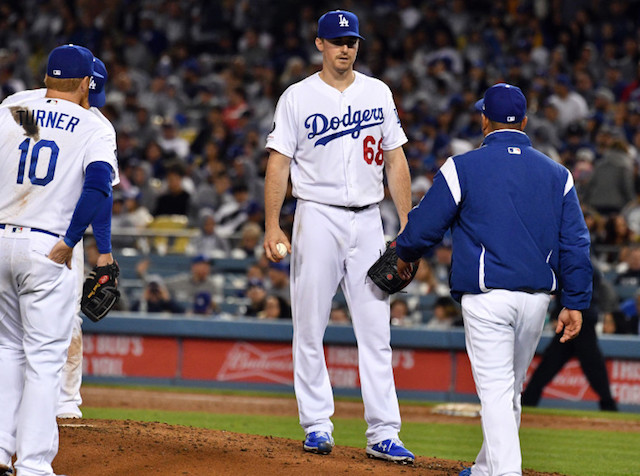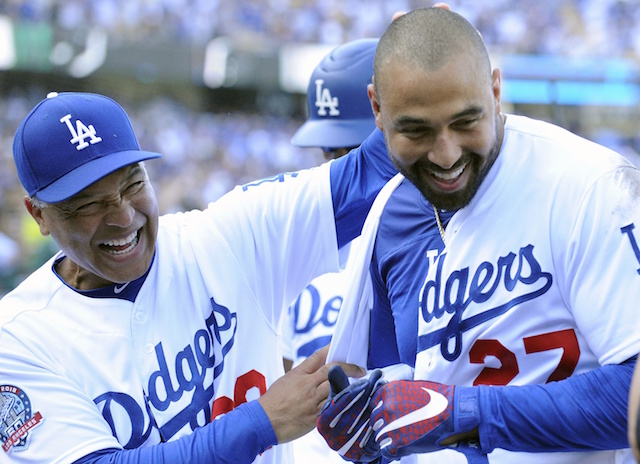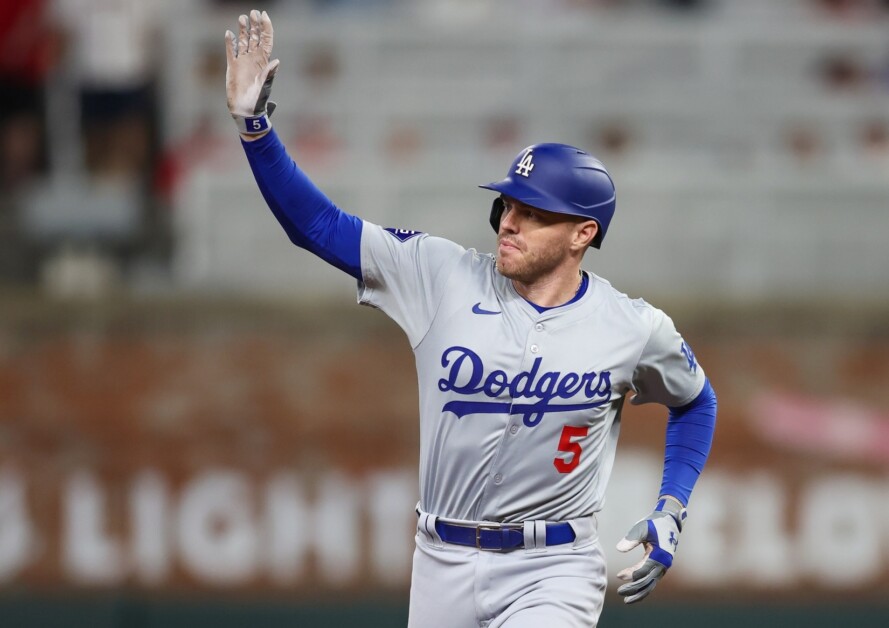Fresh off a sweep at the hands of longtime rival St. Louis Cardinals, the Los Angeles Dodgers were looking to rebound at home against the Milwaukee Brewers in a rematch of the 2018 National League Championship Series. Instead, their losing streak now sits at five games.
If the skid is going to be snapped, Dodgers starting pitching must improve. Following the 8-5 loss, manager Dave Roberts called on his entire pitching staff to get back on track.
From the start of the season, the starting rotation was in shambles with Clayton Kershaw and Rich Hill opening the campaign on the 10-day injured list. Their injuries forced Roberts to insert Julio Urias and Ross Stripling into the rotation, which ultimately weakened the bullpen.
Through the first 15 games of the season, pitching, in general, has been subpar for the Dodgers. While the bullpen has seen their fair share of struggles (Joe Kelly, Pedro Baez, Brock Stewart, and Yimi Garcia), a case could be made that it’s been the starting rotation that hasn’t done its job.
Between the five starters — Hyun-Jin Ryu, Kenta Maeda, Walker Buehler, Stripling and Urias — they have combined to throw for only 74 innings and have a collective 4.86 ERA.
The group has only four quality starts, two of which belong to Ryu, who was just placed on the IL after leaving Monday’s outing with a strained groin. He suffered a similar, albeit more severe, injury last season that sidelined him for more than three months.
Urias fared reasonably well in his first two starts, only allowing three earned runs. He struggled some against the Brewers as he got through five innings. Roberts has had to limit Urias’ workload due to the limit the club placed on him at the beginning of the season.
Meanwhile, Maeda and Stripling perhaps have further confirmed their role may best be suited pitching out of the bullpen. They’ve both shown stretches of dominance in their outings, yet flair out the third time through the order.
Maeda sees his batting average against skyrocket from .174 the first time through the order (2.57 ERA) to .286 the third time through the order to go along with a 10.80 ERA.
But perhaps the biggest concern regarding the rotation lies with Buehler’s struggles through his first three starts. Buehler has an 8.25 ERA with only nine strikeouts compared to five walks, while just pitching 12 innings. When watching Buehler pitch, it’s tough to pinpoint what exactly is hindering his performance.
One trouble spot could be that while Buehler’s velocity seems to be the same as last year, his vertical and horizontal movement have dropped from last season.
Last season, Buehler had one of baseball’s best fastballs. It averaged over 97 mph with 10.5 inches of vertical movement. This season, the velocity is the same, but the vertical movement has dipped to 9.4 inches.
Granted, that’s still an elite fastball, but the drop in movement also holds true for Buehler’s sinker and cutter; ditto for the horizontal movement for his slider and his curveball.
The drop in movement could also explain why Buehler’s whiff rate on all of his pitches has declined by an average of just over 4%. Which is also another reason why we are seeing low strikeout numbers from an elite pitcher.
After Thursday’s loss, Buehler did acknowledge his delayed start to Spring Training has affected the way he’s pitched to start the season. Though, he also refused to use that as any sort of excuse.
Given that Buehler openly admitted to being a little behind schedule due to missing most of Spring Training, there isn’t a big reason to panic. He will settle into midseason from right around, well, midseason.
Don’t forget he’s coming off of a year in which he threw the most innings of his career and pitched deep into October.
Buehler and company will rest a little easier come Monday when Kershaw is expected to make his 2019 debut after two rehab starts in the Minor Leagues. There’s been plenty of speculation about his decline, but if anyone can help the rotation settle in, it’s Kershaw.








